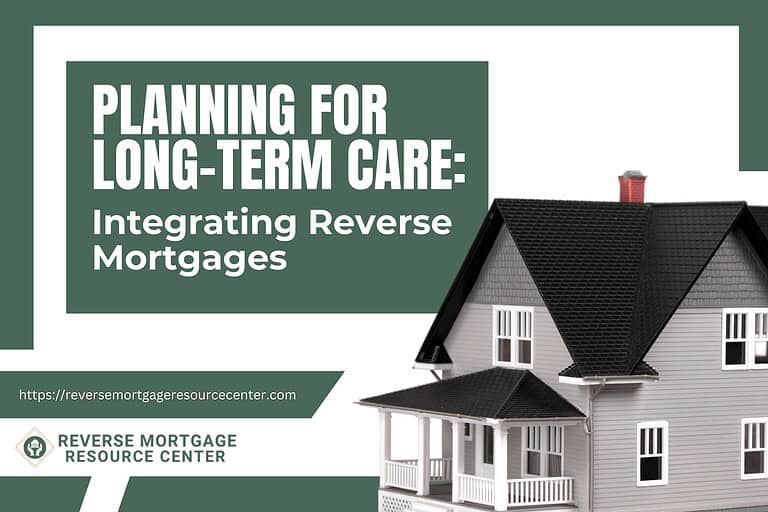Reverse Mortgages and Financial Education Initiatives: Empowering Seniors Through Knowledge
As individuals approach retirement, financial stability becomes a paramount concern. For many seniors, their home represents a significant portion of their wealth. Reverse mortgages have emerged as a financial tool offering an alternative source of income, allowing seniors to tap into the equity of their homes. However, the decision to pursue a reverse mortgage is not one to be made lightly. It requires a thorough understanding of the implications and risks involved. In this article, we advocate for the development of targeted financial education initiatives aimed at seniors considering reverse mortgages. By equipping them with the knowledge and tools to make informed decisions, we can empower seniors to navigate their financial challenges confidently.
Understanding Reverse Mortgages
A reverse mortgage is a loan available to homeowners aged 62 and older that allows them to convert part of the equity in their homes into readily accessible funds. Unlike traditional mortgages where the homeowner makes monthly payments to the lender, in a reverse mortgage, the lender disburses money to the homeowner. These disbursements can be received as a lump sum, a fixed monthly amount, a line of credit, or a combination of these options.
One of the primary advantages of a reverse mortgage is that it provides seniors with a source of funds without requiring them to sell their homes. This can be particularly appealing for retirees who wish to remain in their homes while supplementing their retirement income. Additionally, reverse mortgages are non-recourse loans, meaning that the borrower or their heirs will not be held personally liable for any remaining loan balance that exceeds the value of the home at the time of repayment.
Challenges and Considerations
Despite the potential benefits, reverse mortgages come with their own set of challenges and considerations. It is essential for seniors to fully understand these before deciding to pursue this financial option.
- Loan Costs: Reverse mortgages typically come with higher fees and closing costs compared to traditional mortgages. These costs can include origination fees, mortgage insurance premiums, and servicing fees. Seniors need to carefully evaluate whether the benefits of a reverse mortgage outweigh these upfront expenses.
- Impact on Equity: By tapping into the equity of their homes, seniors reduce the value of the inheritance they can leave to their heirs. This consideration is especially important for those who wish to pass down their homes or other assets to their children or grandchildren.
- Interest Accrual: Unlike traditional mortgages, where the homeowner pays down the loan balance over time, the balance of a reverse mortgage increases over time as interest accrues. This can significantly reduce the equity remaining in the home and may limit future options for the homeowner.
- Loan Repayment: While reverse mortgages do not require monthly payments, the loan must be repaid in full when the borrower no longer occupies the home as their primary residence. This can occur if the homeowner moves, sells the home, or passes away. Seniors need to consider how they will repay the loan and plan accordingly.
The Importance of Financial Education Initiatives
Given the complexity of reverse mortgages and the potential risks involved, it is crucial for seniors to have access to comprehensive financial education initiatives. These initiatives should be specifically tailored to address the unique needs and concerns of older adults facing financial challenges in retirement. By providing seniors with the knowledge and tools to make informed decisions, we can empower them to secure their financial futures effectively.
- Understanding the Basics: Financial education initiatives should start by providing seniors with a clear understanding of what reverse mortgages are and how they work. This includes explaining the eligibility requirements, loan options, costs, and potential risks associated with reverse mortgages. By demystifying the process, seniors can make more confident and informed decisions.
- Exploring Alternatives: In addition to reverse mortgages, seniors should be made aware of alternative strategies for supplementing their retirement income. This might include downsizing to a smaller home, exploring government assistance programs, or implementing a comprehensive budgeting and savings plan. By considering all available options, seniors can choose the strategy that best aligns with their financial goals and circumstances.
- Evaluating Personal Finances: Financial education initiatives should also help seniors assess their overall financial situation and identify their short-term and long-term goals. This includes conducting a thorough review of their income, expenses, assets, and debts, as well as estimating their future expenses in retirement. By taking a holistic approach to financial planning, seniors can make more informed decisions about whether a reverse mortgage is the right choice for them.
- Navigating Legal and Regulatory Considerations: Reverse mortgages are subject to a complex set of laws and regulations designed to protect consumers. Financial education initiatives should provide seniors with guidance on navigating these legal requirements and understanding their rights and responsibilities as borrowers. This might include information on counseling requirements, disclosure obligations, and consumer protections under federal and state law.
Considerations for Seniors
When considering whether a reverse mortgage is the right financial option, seniors should take into account various factors to ensure they are making an informed decision that aligns with their individual circumstances and goals.
- Financial Stability: Seniors should assess their overall financial stability and consider whether they have sufficient income to cover their expenses in retirement without relying solely on a reverse mortgage. It is essential to have a realistic understanding of one’s financial situation before committing to any long-term financial obligation.
- Homeownership Plans: Seniors should consider their plans for homeownership in the future. If they wish to remain in their homes for the foreseeable future and have no intention of selling or downsizing, a reverse mortgage may be a suitable option. However, if they anticipate relocating or passing down their home to heirs, alternative financial strategies may be more appropriate.
- Impact on Heirs: Seniors should carefully consider the potential impact of a reverse mortgage on their heirs. By tapping into the equity of their homes, seniors reduce the value of the inheritance they can leave to their children or grandchildren. Open and honest communication with family members about these considerations can help mitigate any potential conflicts or misunderstandings.
Long-Term Care Planning: Seniors should also consider how a reverse mortgage fits into their long-term care planning. While a reverse mortgage can provide additional income to cover healthcare expenses or aging-related costs, it is essential to weigh the potential trade-offs and ensure that adequate provisions are made for future care needs.
REVERSE MORTGAGE RESOURCE CENTER ~LIVE LIFE ON YOUR TERMS~
Our Lending Team has been serving our clients since 2004. We are passionate about serving our clients with integrity to help them achieve their financial goals.







